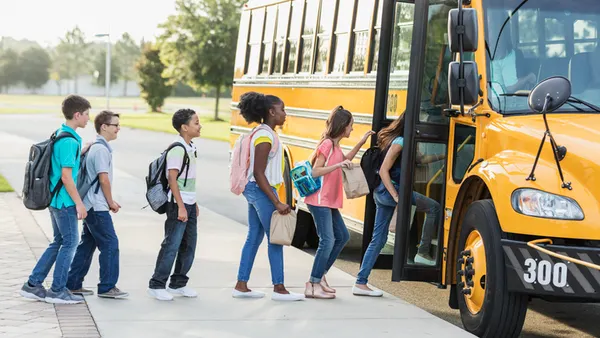Dive Brief:
- A new study from the Centers for Disease Control and Prevention found that more school lunches include at least two servings of vegetables and more whole grains since 2010.
- But wealthier students who can pay full price for school lunch have increasingly opted out of the healthier offerings.
- Meanwhile, the number of students who are eligible for free and reduced lunch is on the rise.
Dive Insight:
While it can seem like a plus if more students bring their own lunch, the effects are more complicated. For one, many bagged lunches aren't as healthy as what's now served in school cafeterias. And the shifts can also hit districts' budgets. As participation drops and nutritional demands increase lunch costs, school districts are left to cover the difference.
"We've had a financial loss each of the last three years in the St. Paul school district" in Minnesota, Jean Ronnei, who oversees nutrition services for the district, told NPR. "When we lose participation and the food costs and labor costs rise, at some point, the financial picture is gloomy."
As a result, some lawmakers are pushing a loosening of nutritional standards to lure students back.




 Dive Awards
Dive Awards







